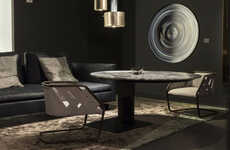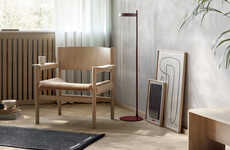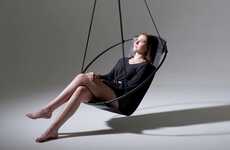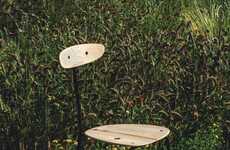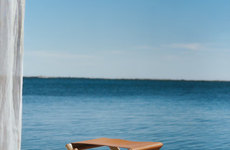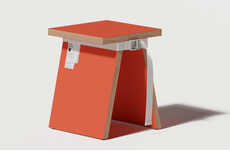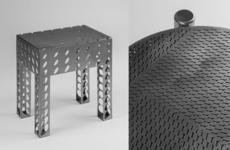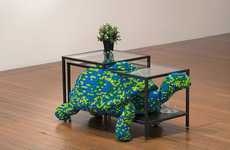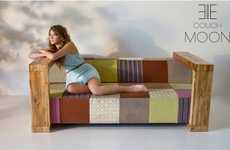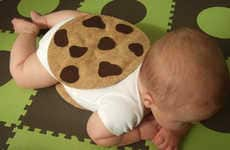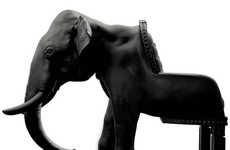
The 'Coat' Leather Stool Chair Design Changes for Each Piece
Gil Cohen — April 4, 2013 — Art & Design
References: guidobrinkmann.de & designspotter
Letting each of the pieces cure naturally, furniture designer Guido Brinkmann covers his leather stool chair collection with a tough jacket of raw leather, hence the name 'Coat' for this series of seats.
Unconcerned with shaping and symmetry, the designer uses vegetable-tanned leather over a thin wire frame to get the basic silhouette of the stool series. Adding moisture to the taught material makes it more pliable and easy to manipulate, and the final shape occurs naturally while it sits to dry. Later, wax and heat are applied to harden and preserve the piece for a rugged and durable finish.
The 'Coat' leather stool chair collection has a rough look that is perfect for a man cave or over a rawhide rug.
Unconcerned with shaping and symmetry, the designer uses vegetable-tanned leather over a thin wire frame to get the basic silhouette of the stool series. Adding moisture to the taught material makes it more pliable and easy to manipulate, and the final shape occurs naturally while it sits to dry. Later, wax and heat are applied to harden and preserve the piece for a rugged and durable finish.
The 'Coat' leather stool chair collection has a rough look that is perfect for a man cave or over a rawhide rug.
Trend Themes
1. Raw Leather Furniture - The use of raw leather in furniture designs is a trend that offers a unique, rugged aesthetic for interior design projects.
2. Naturalistic Design - The focus on natural shapes and textures in furniture design is a trend that provides an opportunity for unique and personalized pieces.
3. Vegetable-tanned Leather - The use of vegetable-tanned leather as a material for furniture design is a trend that offers a sustainable and eco-friendly option for creating new pieces.
Industry Implications
1. Furniture Design - The furniture design industry could benefit from exploring the use of raw leather and other natural materials to create unique and personalized pieces.
2. Interior Design - The interior design industry could capitalize on the trend of naturalistic designs to create unique and interesting spaces for clients.
3. Sustainable Textiles - The sustainable textile industry could benefit from the trend of using vegetable-tanned leather in furniture design, promoting eco-friendly options for consumers and designers alike.
1.1
Score
Popularity
Activity
Freshness

